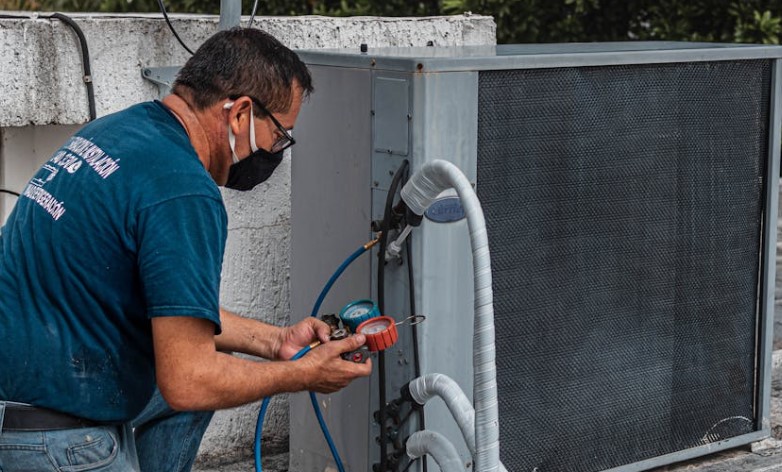- Venous insufficiency treatment requires careful planning, including exploring various outpatient procedures, their efficacy, and potential complications.
- The quality of clinic facilities, the technology available, and the professional training of the staff directly impact treatment outcomes.
- Understanding treatments’ potential risks, benefits, and success rates is vital for making an informed decision.
- Considering the recovery process, planning your schedule around the procedure, and following post-treatment care instructions are key to a smooth recovery.
- Discussing insurance coverage, understanding the claim process, and the extent of coverage for your chosen procedure can alleviate financial stress.
When considering outpatient procedures for venous insufficiency, planning strategically is crucial. You must weigh treatment options, consider physician expertise, and evaluate clinic facilities. Understanding each option’s potential risks and benefits and the recovery process will help you make an informed decision.
- Research about different treatment options available.
- Consult with multiple physicians specialized in venous treatments.
- Evaluate the facilities and technology available in the clinics.
- Understand the potential risks, benefits, and success rates.
- Consider the recovery process for each treatment option.
- Plan your schedule around the procedure and recovery time.
- Discuss with your insurance provider.
Research about different treatment options available.
In the realm of venous insufficiency treatments, various outpatient procedures are available, each with unique advantages and considerations. Here are some things to consider:
Consult with multiple physicians specialized in venous treatments.

When exploring your options, it’s crucial to consult with multiple physicians who specialize in venous treatments. These doctors will possess in-depth knowledge about various procedures, their efficacy, and potential complications. Radiofrequency Ablation (RFA) is a widely recommended treatment with a minimally invasive solution.
By utilizing radiofrequency energy, this procedure effectively heats, collapses, and seals off targeted veins, providing optimal results. RFA has been praised for its high success rate, rapid recovery time, and low risk of complications. However, as with any medical procedure, it may not suit everyone.
Specific patient characteristics, such as the severity of venous insufficiency, overall health, and personal preferences, may make other treatments more appropriate. Therefore, seeking professional opinions from multiple venous treatment specialists can provide a balanced perspective and help you choose the best treatment path.
Evaluate the facilities and technology available in the clinics.
The quality of the clinic facilities and the technology available can significantly impact the outcome of your treatment. Advanced clinics will have state-of-the-art equipment and use the latest techniques for treating venous insufficiency.
These include ultrasound-guided procedures, laser treatments, and other minimally invasive methods. Additionally, the clinic’s environment should uphold the highest standards of cleanliness and hygiene. Staff should be professionally trained and adhere to all safety protocols to ensure patient safety and comfort.
Furthermore, the clinic should offer comprehensive care, including pre-treatment consultation and post-treatment follow-up. Check for accreditation from medical boards or professional societies as it can be a reliable indicator of a clinic’s commitment to quality. Remember that choosing a clinic with the latest technology and well-trained staff can enhance the success rate of your treatment and improve your recovery experience.
Understand the potential risks, benefits, and success rates.
Every treatment has potential risks and benefits that must be understood before deciding. For venous insufficiency treatments, benefits often include immediate relief from painful symptoms, improved cosmetic appearance, and the prevention of worsening venous disease. The success rates can be markedly high, especially with modern techniques.
However, as with any medical procedure, there are potential risks and complications, such as minor skin burns, temporary nerve damage, or vein irritation known as thrombophlebitis. These complications are generally rare and can be minimized by choosing an experienced specialist and a well-equipped clinic.
Discussing your medical history with your doctor is crucial, as certain conditions may increase the risk of complications. Understanding these aspects will help you evaluate your comfort level with the procedure and make an informed decision.
Consider the recovery process for each treatment option.
The recovery process post-venous insufficiency treatment varies depending on the procedure and individual health factors. Upon completion of the procedure, patients are encouraged to walk and stay active, promoting healthy blood flow and aiding recovery.
Some patients might experience minor discomfort, bruising, or swelling, which generally subsides within a few weeks. Over-the-counter pain relief or compression stockings may be suggested to manage these symptoms. Clinics often schedule follow-up appointments to monitor the healing process and ensure the successful closure of the treated veins.
It’s crucial to adhere to the post-treatment care instructions provided by your healthcare provider to ensure optimal recovery. Always remember, the key to a smooth recovery lies in open communication with your healthcare provider and adherence to their guidance.
Plan your schedule around the procedure and recovery time.

Considering the procedure’s expected duration and recovery time, planning your schedule is imperative to ensure a stress-free experience. Most outpatient treatments for venous insufficiency are quick, and often completed within an hour or two. However, you should avoid scheduling strenuous activities for a few days post-procedure.
The duration of the recovery period varies among individuals. While most patients can resume normal activities within a few days, others may require a few weeks to fully recover. Preparing for this recovery time is essential by arranging work leaves or adjusting your commitments accordingly. It’s also advisable to plan for transportation post-procedure, as you may be advised against driving immediately after the treatment.
Furthermore, regular follow-up appointments should be factored into your schedule to ensure a smooth recovery process. By planning, you can ensure that your treatment and recovery process interfere minimally with your daily routine, allowing you to focus on your health and recovery without additional stress.
Discuss with your insurance provider.
Before embarking on any medical treatment, discussing coverage options with your insurance provider is crucial. Venous insufficiency treatments, especially outpatient procedures, can be costly, and understanding your insurance coverage can help alleviate financial stress. You’ll need to verify if your chosen procedure is covered, the extent of the coverage, and any out-of-pocket costs you may be responsible for.
Some insurance companies may require a waiting period, during which conservative treatments like compression stockings are tried before the procedure is approved. Ensure you also understand the claim process, including necessary paperwork and deadlines. It’s advisable to get the details in writing for future reference. With this knowledge, you can make a more informed decision and be better prepared for the financial implications of your treatment.
In conclusion, managing venous insufficiency effectively requires careful planning and due diligence. Always consult with multiple specialists, research your treatment options, and understand the potential risks and benefits. Ensure your clinic meets high-quality standards, and plan for your recovery time. Discuss your insurance options thoroughly. Your health deserves the best care, so take the necessary steps to make an informed decision.





